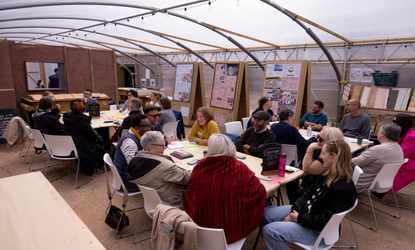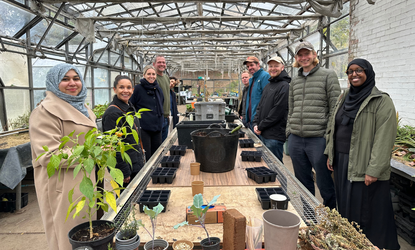Janet Grauberg, Esmée’s learning partner for our Leaving Care Learning Programme, shares her reflections on the Government’s draft Children’s Social Care Framework and Dashboard and how we, and organisations we work with, have responded.
Earlier this month I submitted a response to the Department for Education’s consultation on their draft Children’s Social Care National Framework and Dashboard, on behalf of Esmée's Leaving Care Learning Programme.
A number of the individual grantees on the programme also submitted responses with views on the framework as it relates to young people leaving care, including the Refugee and Migrant Children’s Consortium and Coram Voice, as well as some of the organisations we work with, including the National Care Leavers Benchmarking Forum (NLCBF).
As I’m reflecting on what we’ve told the DfE, a common thread emerges – the draft framework and dashboard really doesn’t reflect what we know matters to care leavers now.
Performance Indicators like it’s 1999…
Astonishingly, the proposed outcomes and indicators are all the same as, or subsets of, the first draft of Children’s Social Care Performance indicators published in 1999. In other words, despite nearly twenty-five years of investment, legislation, guidance and support for young people with care experience, and the Government’s Response to the Care Review describing this as a “once in a generation opportunity to reset children’s social care”, the outcomes that are to be measured date from the previous generation, before the Children (Leaving Care) Act 2000, the Children & Families Act (2014), the cross-government “Keep on Caring” Strategy published in 2016, and initiatives which have been proved to have impact such as Staying Put and Staying Close.
Five things the Framework should reflect
Here are five things that I think we’ve learnt in those twenty-plus years, that any outcomes framework should reflect.
1. The experience of Unaccompanied Asylum-Seeking Children
In those twenty-plus years, the number and proportion of young people leaving care who are former Unaccompanied Asylum-Seeking Children, and subject to various forms of immigration control, has risen steadily, and is currently 27% of all care leavers. However, the outcomes, narrative and indicators do not appear to take any account of their experience. For example, for these groups it is necessary to take a different perspective on issues such as employment rates, as over 18s without status are unable to work. And family-finding activities will look different for someone who has arrived here as a lone teenager, to someone who was born here and who has extended family close by.
2. Inequities faced by different groups
Since 1999 we have become much more conscious of the inequalities faced by different groups in society, but this isn’t reflected in the proposed indicators. We have recommended that the DfE should collect data so that we can understand the experience of care leavers who:
- Arrived as unaccompanied asylum seeking children
- Are from different racial and ethnic groups
- Have an Education, Health & Care Plan
- Have a mental health disorder/ are being treated by CAMHS
- Identify as LGBTQ+
- Are/have been in custody.
3. What makes life good for young care experienced people
The proposed indicator set does not reflect what we have learnt about what makes life good for young people with care experience. A priority should be to include “subjective wellbeing” indicators such as those in Coram Voice’s Bright Spots survey. These ask:
- Overall, how satisfied are you with your life nowadays?
- Overall, to what extent do you feel the things you do in your life are worthwhile?
- How happy did you feel yesterday?
- How anxious did you feel yesterday?
As well as asking these questions to hear what young people with care experience feel about their lives, the benefit of these questions is that they map to the Office for National Statistics (ONS) national statistical collections, and so the wellbeing of young people with care experience can be benchmarked with the population at large.
4. Collaboration and sharing good practice
Over those twenty-plus years we have learnt a lot about how change happens in children’s services, and that using data to drive improvements in performance is a limited approach. Initiatives such as the Partners in Practice programme where LAs share good practice with others, the work of ADCS regional groupings, and the value that is placed on the NLCBF, indicate that collaboration to share practice in a learning environment is a valuable route to practice improvement. Further, we have learnt that good outcomes for young people depend on a wide range of partners – NHS Trusts, Housing providers, colleges, Universities and employers, and a conversation between the DfE and local authorities is not broad enough in scope to bring about change.
5. Listening to the voices of young people with care experience
Lastly, and most importantly, we have also learnt that real change comes from listening to the voices of young people with care experience. We have seen from projects such as New Belongings how genuine engagement with young people to hear what they want to improve, coupled with senior commitment to act, can lead to rapid and positive change. We support the recommendation made in Coram Voice’s response to the Consultation that, alongside the six “Missions” for those with care experience set out in the Government’s Response to the Care Review, there should be a “Mission 7” to ensure that children and young people have a voice in their own care and are enabled to exercise their right to be heard and participate in all levels of decision making.
The DfE’s ambition to enable local authority children’s social care to transform the lives of the young people they work with is laudable. And a set of shared outcomes and indicators can galvanise progress. But unless these outcomes and indicators reflect what we have learnt since 1999 about what matters to care leavers, and the plans to improve practice are produced with care leavers themselves, that ambition will not be fulfilled.





